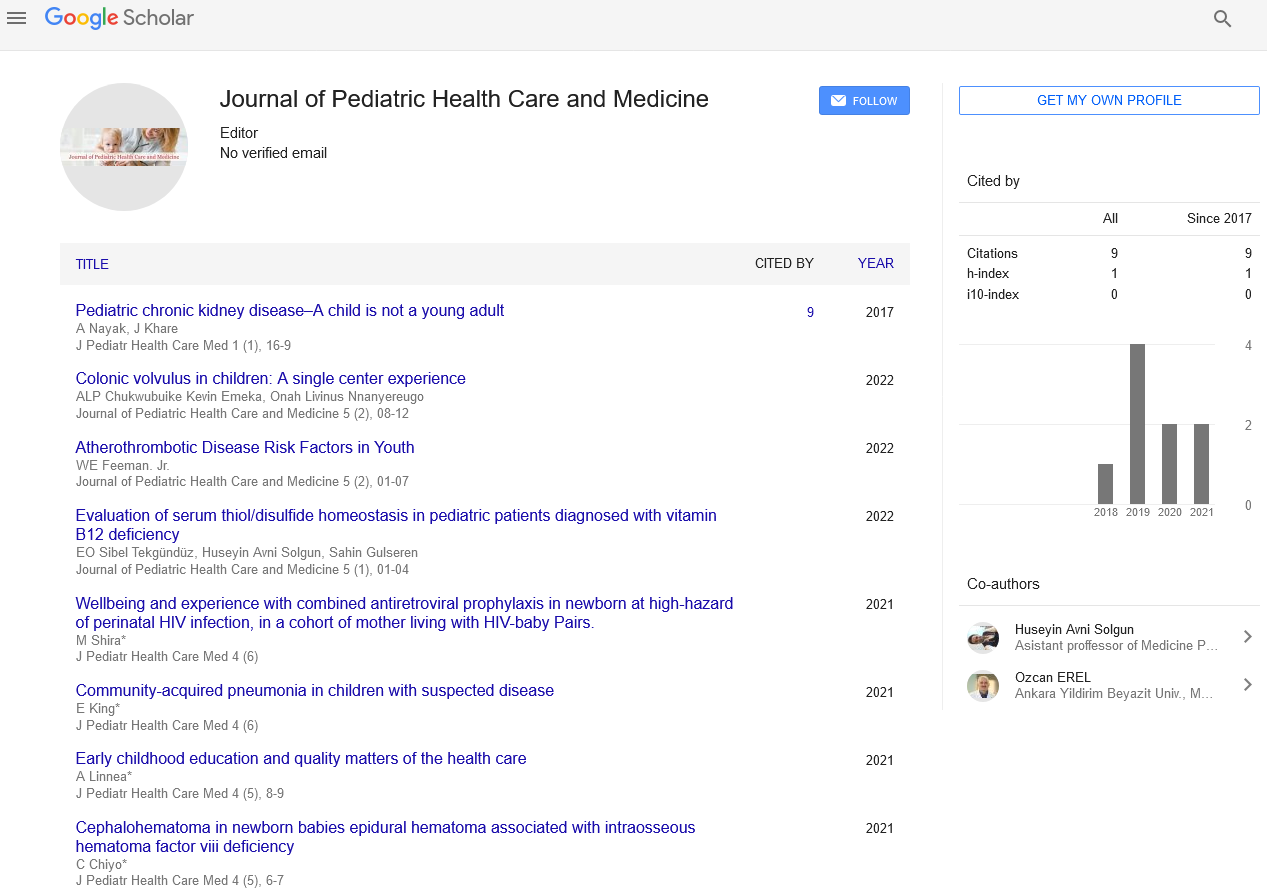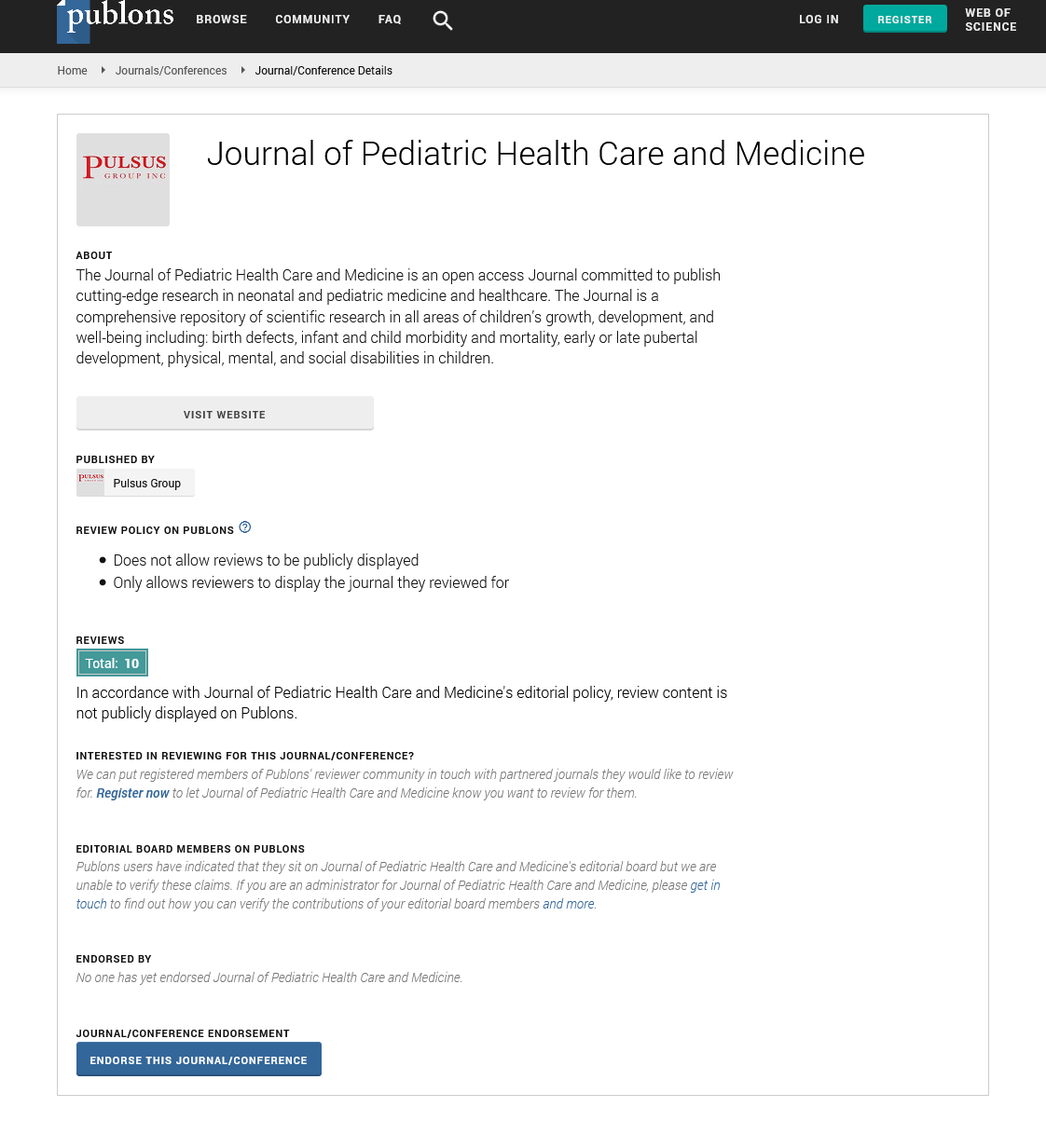General concepts on allergen immunotherapy: A pediatric approach
Received: 12-Mar-2022, Manuscript No. puljphcm-22-4477; Editor assigned: 15-Mar-2022, Pre QC No. puljphcm-22-4477; Accepted Date: Mar 26, 2022; Reviewed: 20-Mar-2022 QC No. puljphcm-22-4477; Revised: 25-Mar-2022, Manuscript No. puljphcm-22-4477; Published: 28-Mar-2022, DOI: 10.37532/ puljphcm.2022.5(2).28-29
Citation: Mazow J. General concepts on allergen immunotherapy: a pediatric approach. J Pedia Health Care Med. 2022; 5(2):28-29.
This open-access article is distributed under the terms of the Creative Commons Attribution Non-Commercial License (CC BY-NC) (http://creativecommons.org/licenses/by-nc/4.0/), which permits reuse, distribution and reproduction of the article, provided that the original work is properly cited and the reuse is restricted to noncommercial purposes. For commercial reuse, contact reprints@pulsus.com
Abstract
Oral Allergen-Specific Immunotherapy (OIT) has been shown to improve the response threshold to the culprit food allergen in children with chronic IgE-mediated Food Allergy (FA) to cow's milk, hen's egg, and peanuts. In the event that the culprit meal is accidentally consumed during therapy, OIT may prevent patients from severe responses. Despite this, several questions remain unanswered, including safety concerns, the development of predictive biomarkers, and the efficacy of post-desensitization treatment. In this regard, the use of omalizumab (Anti-IgE monoclonal antibody) as an adjuvant therapy to OIT has been recommended in order to lower the risk of OIT-related allergic responses.
Keywords
Immunotherapy, Food allergy, Desensitization, Immunoglobulin
INTRODUCTION
Food Allergies (FA) mediated by immunoglobulin E (IgE) is a serious and possibly life-threatening illness induced by acute IgE-mediated immune responses to a particular food allergen. FA are categorized as Immunoglobulin (Ig) E-mediated FA, non-IgE-mediated FA, and mixed FA based on the underlying patho-mechanism and, in particular, the participation of a hypersensitive reaction. FA incidence has been growing in developed nations over the previous few decades, according to studies. FA has an estimated global prevalence of 0.45% to 10% in babies and preschool-aged children, 1% to 5% in school-aged children, and around 4.5% in adults. Although the majority of FA responses are mild to moderate, they can occasionally be severe, deadly, or near-fatal.
Milk, egg, peanut, tree nut, wheat, soy, fish, and shellfish are the most allergenic foods, with prevalence varying according to age and local dietary practices. FA has a varied natural history: most children with egg, milk, or soy allergies overcome their allergies, but FAs to peanuts, tree nuts, and shellfish are more difficult to cure. Overall, tolerance for eggs is obtained by 3 years of age in 50% of instances and by school age in 80% of cases; tolerance for milk is attained by 5 years of age in roughly 50% of cases. Only 10%–20% of people allergic to peanuts or tree nuts develop clinical tolerance on their own.
Starting with a build-up phase where increasing quantities of the culprit food are administered in the hospital, Oral Immunotherapy (OIT) consists of a titrated oral administration of the culprit food at regular intervals to induce tolerance [i.e., the ability to take unlimited amounts of the culprit food without presenting reactions even after its intake is stopped indefinitely]. During the build-up phase, the maximum tolerable dosage is generally assumed daily at home in the gap between dose increments, which is commonly weekly or every other week. The build-up phase is followed by a maintenance phase in which a maximum tolerable quantity of food is consumed on a daily basis. The procedures vary in terms of the kind of food utilized (fresh or baked), the number of doses given, the quantity of allergenic protein per dosage, and the framework used to separate single doses from maintenance doses. So far, OIT is the only possibly curative therapy for FA, capable of influencing the immune system and altering the disease's natural history. The major goal of OIT is to raise the reactivity threshold in order to protect patients from potentially fatal events caused by inadvertent consumption of the offending meal. Desensitization [i.e., an increase in the threshold of reactivity toward a specific food, allowing the patient to consume the culprit food without adverse reactions while continuing OIT] and sustained unresponsiveness (SU) [i.e., the ability to assume any amount of the incriminated food, even after a long period of avoidance]. A longer maintenance phase and a younger age for starting OIT are both related with a higher risk of obtaining SU. There are currently no standards defining the ideal period for OIT to be stopped prior to demonstrating SU. Furthermore, the time it takes for SU to certify the attainment of tolerance is uncertain, and it appears that this condition may not continue long after OIT.
The action mechanisms aren't completely known. A decrease in particular IgE levels (after an initial increase) was seen, followed by an increase in specific immunoglobulin G4 (IgG4), resulting in a balance in the attainment of tolerance. IgG4 competes with sIgE for allergen binding, reducing mast cell and basophil responsiveness by depriving them of their prepared mediators via continual degranulation. During OIT, basophil activation is diminished, with a global condition of hypo responsiveness or energy, unrelated to IgE levels, due to continual low dose allergen exposure. In reality, IgE levels typically raise when OIT begins, then remain high for months before returning to baseline or lower levels. However, this OIT-induced suppression of basophils is not permanent, and it appears to be required to sustain remission following OIT termination.
The involvement of mast cells in OIT, which has a lengthy half-life ranging from months to years, is poorly understood. Recent research on murine models suggests that early mast cell degranulation plays a key role in desensitization and, like basophils, offers a barrier against allergen exposure. As a result, it's plausible to believe that the suppression of mast cell and basophil activity during OIT is the basis of desensitization, and that the depletion of this suppression is linked to the slow reemergence of clinical reactivity in certain individuals following OIT cessation.
FA is a serious health issue that is becoming more prevalent. Dietary restriction is the primary treatment option for FA, with rescue drugs used in the event of severe allergic responses. In addition, innovative therapeutics for FA treatment have been identified in recent decades, including microbiome, biologic drugs, and oral/sublingual/subcutaneous/epicutaneous Immunotherapy. While the findings of current OIT trials are promising, the variety of research protocols, such as the length of maintenance doses, key end objectives, definition of desensitization, OFC procedures to measure desensitization, SU, and safety profiles, is a major challenge in OIT. In OIT, the natural raw form of food was typically employed. Some research, on the other hand, found that processed food allergens, such as hydrolyzed, pasteurized, dry powdered, heated, undercooked, and so on, can cause allergic reactions.






